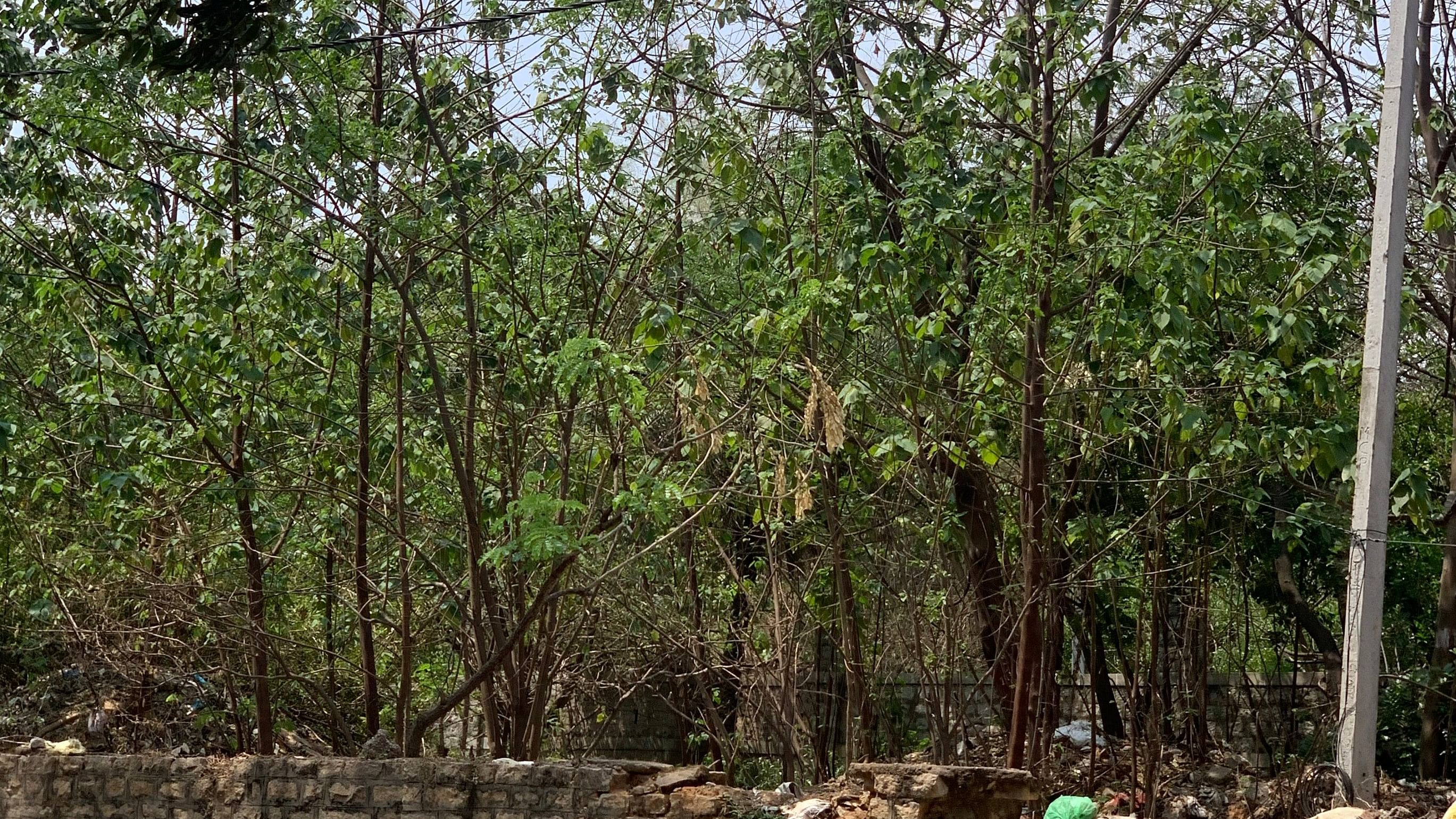
Paper Mulberry grows in the vacant space of Palace Grounds near Mehkri Circle.
Credit: Raghu Tenkayala
Paper Mulberry (Broussonetia papyrifera), a plant classified as invasive, is spreading wildly in open spaces of Bengaluru, including in many lakes and parks, as lack of awareness about its ill effects has turned it into an ornamental plant.
The plant is believed to be a native species of Southeast Asia, was cultivated for making bark cloth and paper. Officials believe the plant entered India in the 1880s as part of horticulture and urban forestry.
The tree fruits twice a year with the pollen from its large flowers classified as highly allergic in several countries, including Taiwan, Pakistan and the US. In Taiwan, researchers who conducted tests termed it a “major aeroallergen” and showed a “consistently positive association between B. papyrifera pollen exposure and increased clinic visits for asthma”.
In Bengaluru, the plant has taken over the open spaces -- be it parks, lakes or large campuses like the Indian Institute of Science and the areas near University of Agricultural Sciences. The unmanaged vacant spaces in palace grounds, railway stations in Malleswaram, Yeshwantpur and Hebbal and even the areas next to Forest Department’s headquarters in Malleswaram have seen growth of huge paper mulberry groves.
Besides health impact, the spread of the plant has come at the cost of native species. Last year, researchers warned that invasive plants like Lantana camara have threatened about 66% of India’s natural systems. However, the invasives in urban areas are yet to come under scanner.
“Urbanisation and change of natural habitat due to human intervention are responsible for the spread of invasive plants. It poses risks to indigenous plants in Chandigarh,” said Daizy R Batish, professor at Department of Botany, Punjab University.
Raghu Tenkayala, a lawyer and urban ecology activist, said the BBMP and the Forest Department need to wake up urgently.
“I have seen people growing it as an ornamental shrub in apartments. This is because there is a lack of knowledge. If this invasion is not checked, protected areas next to Bengaluru like Bannerghatta National Park will face the threat,” he said.
A N Yellappa Reddy, retired forest officer and
environmentalist, said lack of a regulatory mechanism has led to import of invasive species as ornamental plants.
“The native species, especially those with medicinal values, have disappeared from the landscape of Bengaluru. Besides concretising open areas, urbanisation has led to import of invasive plants and there’s nobody to monitor the situation. A committee of experts should assess the situation and issue directions on the plants permitted to be grown in a particular landscape,” he said.
Deputy Conservator of BBMP Forest Cell B L G Swamy acknowledged the problem. “I have noticed the plants in several places. We will take necessary action,” he said.
Principal Chief Conservator of Forests (Head of Forest Force) Brijesh Kumar Dikshit acknowledged the need for corrective action.
“Research has shown that it is the biggest invasive species threatening the flora of Pakistan. The plant grows by root cuttings as well as seeds and is a major water guzzler. The solution is in uprooting the plants and replacing them with native saplings. We will issue necessary directions in this regard,” he said.